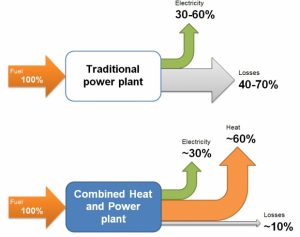 June 2018
June 2018
The delivery of electricity has become so efficient that we take it for granted. It is there whenever we turn on a light switch or plug something into an outlet. It runs our elevators, delivers our heat and keeps us cool.
The only time we take note of electricity is when its cost rises.
Electricity is one of, if not the, largest items in a condo corporation budget. Understanding where it comes from and how it is used is an integral part of condo management.
Much of Toronto’s electricity comes from Niagara Falls. There is a transmission system for transporting this electricity from where it is generated to where it is consumed. Maintaining this grid is expensive. Failures in the grid can result in power outages that shut down lights, elevators and anything else that requires electrical power.
On-site power generation is used by businesses that find periodic power failures unacceptable, and in healthcare facilities where life-saving medical procedures are done.
Increasingly, condo corporations are looking at on-site power generation. Initially, it was in the form of diesel generators to provide temporary power so buildings could evacuate during an emergency. In 1984 emergency power generators were incorporated into the building code to ensure life safety systems remained operational.
In the 2000s Ontario no longer required on-site fuel storage for emergency generators. This allowed natural gas, a more reliable source of fuel, to be used for emergency power generators. Natural gas generators have a continuous supply of fuel allowing for continuous operation.
The term “sustained occupancy” is used to describe emergency power systems that allow people to remain in high-rise buildings rather than forcing evacuation.
Most alternate sources of energy are impractical for high-rise buildings. These include solar, wind and wave technologies. While each can provide some power, none provide sufficient power to sustain a high-rise building.
Fuel cells are sometimes considered as a way to store excess energy generated from other sources for use when needed. Experience has shown that these are not an effective source of long-term power backup.
 Cogeneration, combined heat and power (CHP), is the production of electrical and thermal energy from one fuel source. Waste heat from electricity generation is recovered and used for applications such as space heating or water heating. These systems are located closer to where the power is used, and can be incorporated into a condo building’s HVAC system. Where used, electricity generated through cogeneration costs less than when purchased from the power grid.
Cogeneration, combined heat and power (CHP), is the production of electrical and thermal energy from one fuel source. Waste heat from electricity generation is recovered and used for applications such as space heating or water heating. These systems are located closer to where the power is used, and can be incorporated into a condo building’s HVAC system. Where used, electricity generated through cogeneration costs less than when purchased from the power grid.




